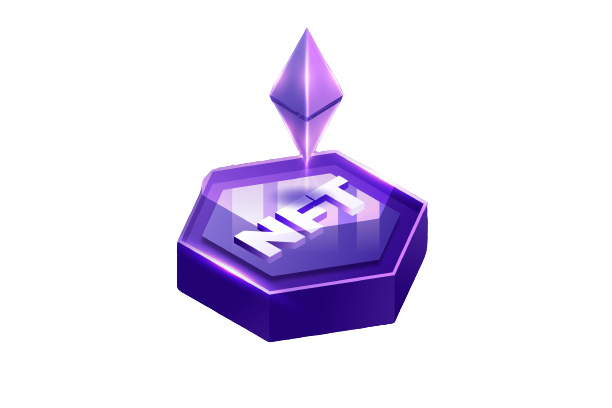
Are you a fan of gaming? Have you heard about NFTs and NFT games but don’t quite understand what they are or why they matter? Well, get ready to level up your knowledge on this page! NFTs are revolutionizing how we interact and play games online, and the phenomenon has taken the world by storm.
Non-fungible tokens, or NFTs, are a type of digital asset that is unique and not interchangeable. NFTs, like Bitcoin or Ethereum, are stored on a blockchain and can represent anything from in-game items to digital art.
NFTs have been gaining popularity in the gaming industry as a way to trade and sell in-game items. For example, the game CryptoKitties allows players to breed and trade virtual cats. These cats are each represented by an NFT on the Ethereum blockchain.
Players can also use NFTs to purchase in-game items or services. For example, the game Decentraland uses NFTs to represent land parcels within its virtual world. Players can buy and sell these land parcels using Decentraland’s native cryptocurrency, MANA.
You now know that non-fungible tokens, or NFTs, are unique digital assets that cannot be interchangeable. While fungible tokens, like Bitcoin or Ethereum, can be divided into smaller units and exchanged for other tokens of the same type, NFTs cannot.
Hopefully, you now have a basic understanding of NFTs but how does this translate to the world of online gaming, and what are NFT games exactly?
NFT games are a new digital game category that uses blockchain technology to store game assets and player data. The NFTs used in the games are unique digital assets that cannot be interchangeable like traditional currency. This means that each NFT has a specific value attached to it, which can be traded or sold on secondary markets.
This new breed of games allows players to own their in-game items and data, giving them true ownership over their virtual worlds and items. In some cases, NFTs can even be used to purchase real-world goods and services. The possibilities for NFT games are endless, and we’re just beginning to see the potential of this exciting new technology.
While some people view NFTs simply as a new way to gamble or speculate on digital assets, others see them as a way to create truly valuable and scarce virtual goods that can be used in games and other digital platforms. Whether or not NFTs will ultimately prove to be valuable remains to be seen, but they are definitely something worth paying attention to in the world of gaming and beyond.
NFT games offer a number of benefits compared to other video games. Firstly, they are more engaging and immersive, as players can own and trade their in-game assets. This creates a sense of community and belonging that traditional games might lack.
Secondly, NFT games add an extra layer of value to in-game items, as they can often be traded or sold for real-world money. Thirdly, NFT games open up the possibility for new types of gameplay, such as betting on game outcomes or managing virtual economies.
Perhaps the most obvious benefit is that they are non-fungible, meaning each game item is unique and cannot be replicated. This allows for a level of customization and personalization that is simply not possible with other video games.
In addition, NFTs can be traded or sold on secondary markets, giving players the opportunity to profit from their in-game achievements. This provides a strong incentive for players to invest time and effort into these games, as they can directly monetize their progress.
Finally, NFTs open up new gameplay mechanics that are not possible with traditional video game items. For example, some NFTs can be used to unlock special abilities or access exclusive content. Overall, NFT games offer an innovative and exciting new way to play video games. They have the potential to revolutionize the industry, and many developers are already working on incorporating this technology into their projects.

Despite these advantages, there are several challenges that need to be addressed before NFTs can be widely adopted in gaming. First, blockchain transaction fees can be expensive when purchasing or selling large numbers of NFTs.
For example, one popular NFT game called Decentral requires players to purchase their own land in order to build and create. These pieces of land can cost hundreds or even thousands of dollars, which may be too expensive for some people.
Second, most games do not currently support NFTs natively, which means players need to use third-party services to trade them. NFTs can also be difficult to value due to their uniqueness and scarcity, and they may fluctuate heavily in price.
Another disadvantage is that NFTs may not be the best fit for all types of games. Some games may require more traditional game mechanics that don’t need the added complexity layer that comes with NFTs.
Additionally, if the game’s economy fails due to a lack of liquidity, then the entire system could collapse.
The uniqueness of NFTs makes them highly sought after by collectors and gamers alike. As a result, the price of some NFT game items can be incredibly high.
The most expensive NFT game item ever sold is the virtual planet “Planet Calypso” from the online game Entropia Universe. The planet was sold for a whopping 6 million dollars in 2010! Since then, other NFTs have been sold for high prices, but none have come close to Planet Calypso’s record-breaking sale.
So why are people willing to pay such high prices for NFTs? For many, it’s simply because they can. NFTs are still a relatively new phenomenon and as such, there is no real secondary market for them yet. This means that if someone wants to sell their NFT, they can name their price and find a willing buyer.